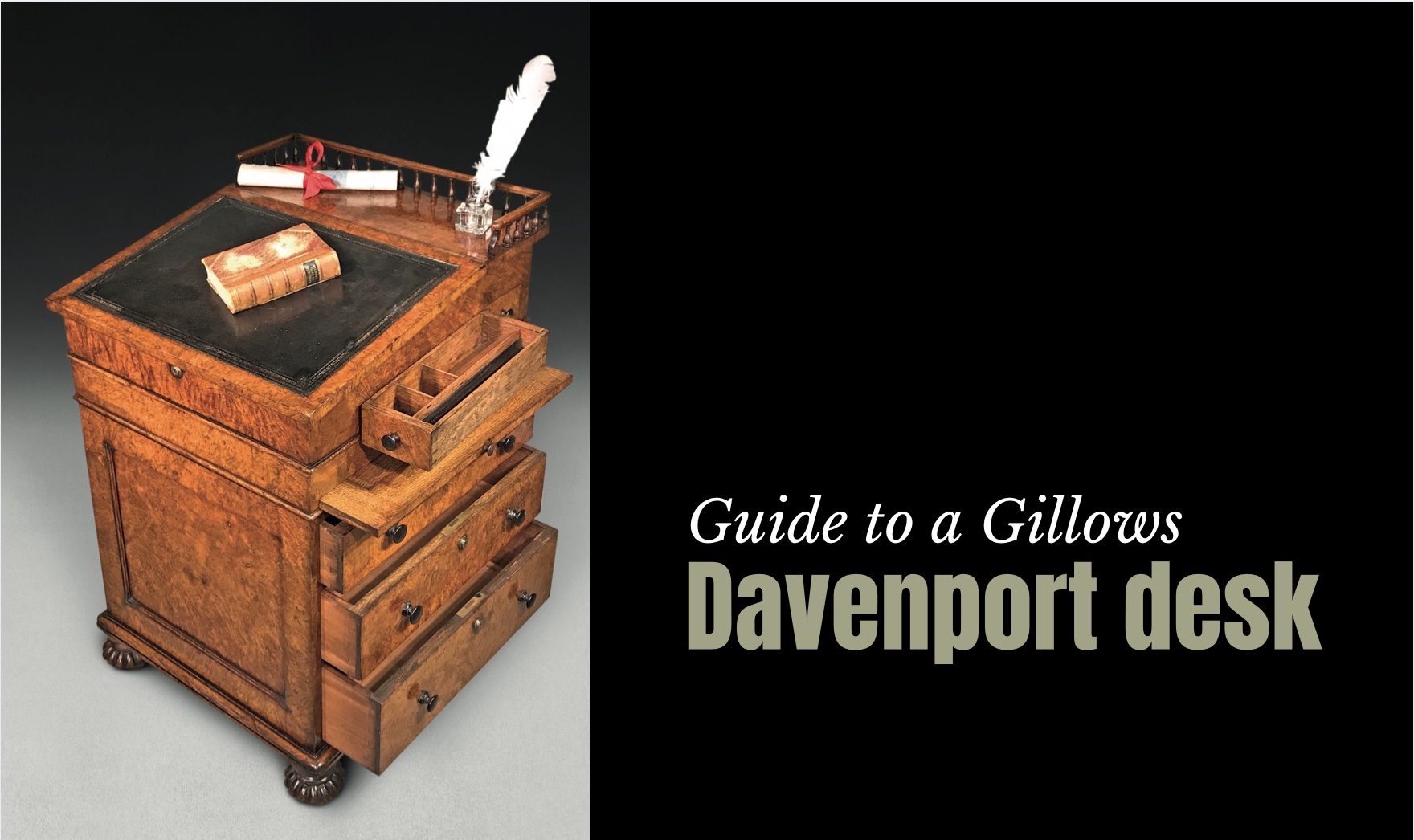
.
.
.
#AntiqueFurniture #GillowsDavenport #BurrWalnutDesk #PollardOak #FineEnglishFurniture #AntiqueCollecting #DavidHarvey #GillowsOfLancaster #HistoricDesks #EdmundNoar #BramahLocks #AntiqueCraftsmen #FurnitureHistory #RareAntiques #VintageDesks
David Harvey, a specialist in fine English furniture, recently acquired a rare antique Davenport desk by the esteemed maker Gillows, which perfectly met the specifications of a discerning client. The desk, initially described as burr walnut, turned out to be veneered in the even rarer pollard oak, a highly prized wood known for its intricate grain and complex figure, resulting from the medieval practice of pollarding oak trees to produce “burrs.”
The client, who specifically sought a Gillows-made and stamped piece, was intrigued by the possibility of a cabinetmaker’s signature. Upon investigation, Harvey discovered the pencil signature “Noar” on the underside of the largest drawer. Research in Susan Stuart’s authoritative two-volume work on Gillows revealed that “Noar” referred to Edmund Noar, a craftsman apprenticed to William Blackburne Jr. in 1796. After Blackburne’s death in 1803, Noar took over his role with Gillows, making this signature a significant historical detail. The desk also bears multiple Gillows stamps, further enhancing its authenticity and desirability.
Gillows is often credited with inventing the Davenport desk design in the late 18th century, commissioned by Captain Davenport as a “small writing table with a sloping-top desk above a case of drawers.” The earliest recorded drawing of a Davenport in the Gillows archives dates to March 1816, and the design remained popular, with 27 iterations documented between 1816 and 1850. The desk in question closely resembles an 1830 design made by Thomas Myers for Ferguson & Co., featuring distinctive Gillows characteristics such as a spindle gallery terminating in scrolls, a hinged pen drawer, a pullout slide, and graduated drawers with ebony knobs. The only deviation is the gadrooned bun feet, a slight variation from the plain feet in the original sketch.
Adding to the desk’s allure is its top-notch lock, a Bramah Patent lock stamped with a crown, the name J Bramah, and the address 124 Piccadilly. Joseph Bramah, the renowned locksmith, patented this high-security design in 1784, and it gained fame for its resistance to picking. Bramah even issued a “challenge” lock, offering 200 guineas to anyone who could pick it, which remained unpicked for over 67 years until Alfred Charles Hobbs succeeded in 1851.
This exceptional piece, with its rich history, rare materials, and impeccable craftsmanship, represents the pinnacle of Gillows’ legacy and marks a remarkable start to the year for Harvey and his client.
Source link


